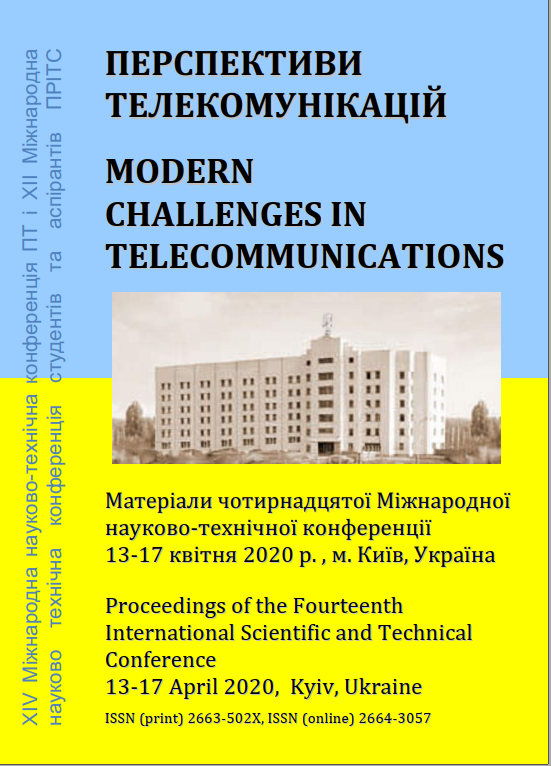ВИКОРИСТАННЯ ПРЕДМЕТНО-ОРІЄНТОВАНОЇ МОВИ ПРОГРАМУВАННЯ P4 ДЛЯ ПОБУДОВИ IMS
Ключові слова:
БЕЗПРОВОДОВА МЕРЕЖА, САМООРГАНІЗАЦІЯ, АЛГОРИТМ, МАРШРУТИЗАЦІЯ, ТРАФІК, КАНАЛ ЗВ’ЯЗКУАнотація
Use of P4 subject-oriented programming language to build IMS.
The relevance of the IMS concept for the construction of LTE mobile networks is analyzed. The stages of development of functional separation, abstraction of IMS - SDN are investigated. A variant of using P4 programming language in SDN networks is considered.
Посилання
Телекомунікаційні та інформаційні мережі : Підручник [для вищих навчальних закладів] / П.П. Воробієнко, Л.А. Нікітюк, П.І. Резніченко. – К.: САММІТ-Книга, 2010. – 708 с.: іл.
OpenFlow Table Type Patterns Version No. 1.0 15 August 2014.
https://itechinfo.ru/content/voice-over-lte-volte.
https://shalaginov.com/2019/05/08/5773/
https://dou.ua/lenta/articles/p4-as-future-of-sdn/
https://habr.com/ru/company/fgts/blog/460439/
https://plvision.eu/rd-lab/blog/sdn/p4-programming-future-sdn.
##submission.downloads##
Як цитувати
Номер
Розділ
Ліцензія
Авторське право (c) 2020 Олександр Миколайович Полуденний, Олександр Іванович Романов

Ця робота ліцензується відповідно до Creative Commons Attribution 4.0 International License.
Authors who submit to this conference agree to the following terms:a) Authors retain copyright over their work, while allowing the conference to place this unpublished work under a Creative Commons Attribution License, which allows others to freely access, use, and share the work, with an acknowledgement of the work's authorship and its initial presentation at this conference.
b) Authors are able to waive the terms of the CC license and enter into separate, additional contractual arrangements for the non-exclusive distribution and subsequent publication of this work (e.g., publish a revised version in a journal, post it to an institutional repository or publish it in a book), with an acknowledgement of its initial presentation at this conference.
c) In addition, authors are encouraged to post and share their work online (e.g., in institutional repositories or on their website) at any point before and after the conference.

